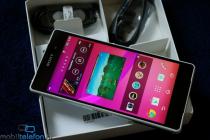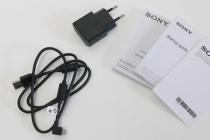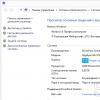To solve your problem, we recommend the following.
Infrared sensors are connected to the loops of the Signal-20P device. The Signal-20P device can monitor the state of 20 AL. The resistance of the AL wires without taking into account the remote element should be no more than 1 kOhm "
Depending on what communication channels exist at the facility, it is possible to use interface converters in fiber-optic lines, Ethernet (S2000-Ethernet), or Nevod-5 radio channel modems. If necessary, the system can be expanded by connecting the devices to the RS-485 interface line, in series with the Signal-20P device. The maximum number of devices in the system is 127. The maximum length of the RS-485 interface line without using the repeater of the "C2000-PI" interface is 3000 meters. Application of "S2000-PI" will allow extending the RS-485 interface line by 3000 meters. Several "S2000-PI" can be used in the RS-485 interface line. Instead of the "Signal-20P" device, you can use the controller two-wire line"S2000-KDL". The output contacts of the IR sensor relay are connected to address expanders ("S2000-AP1", "S2000-AR2", "S2000-AR8"). Addressable expanders are included in the DPLS. "S2000-KDL" can control up to 127 addressable detectors or addressable expanders, the maximum length of a two-wire communication line is not more than 700 meters with a wire cross-section of 0.75 mm2. Those. Your 40 IR sensors are connected to two S2000-KDL devices connected by an RS-485 interface line.
For more information about the transmission of the RS-485 interface over a fiber-optic path, see our website www..support / design recommendations.
OZ AWP "Orion" monitors the presence of an employee in access zones and manages the antipassback mode, analyzing the "Pass" events. When using the S2000-2, this event is generated by the controller itself in the event that, after identifying the business entity and granting access, the access control circuit was violated (for more details, see the S2000-2 operating manual).
In your case, most likely, the access control circuit was not activated, therefore the "Pass" event is not generated, and the antipassback mode does not work.
If we integrate Orion and VideoNet, is it possible to connect cameras from VideoNet to Orion Auto for license plate recognition? On "VideoNet" "e" the cameras are analog.
No, you cannot use video data from cameras from the "VideoNet" system in the "Orion Auto" system. The Orion Auto system only works with Orion Video.
How to set up access control on the "S2000M" remote control to work without a computer? Doors and turnstiles must be locked. How to create doors using PPROG?
To operate the access control system under the control of "S2000M" (without a computer), you must:
Store key codes in devices. Each device ("S2000-2" and "S2000-4"), which allows access by this key, must store the code of this key.
Each device ("S2000-2" and "S2000-4") must correctly indicate the access zones to which access is provided. Doors are not entered into the "S2000" console database. Each door is controlled by a specific device "S2000-2" or "S2000-4". PKU "S2000" transmits data between devices to provide network Antipassback "" a.
To lock doors and turnstiles, "Closing" keys are used. If the access control device is in the "Normal access" mode, then when the "Closing" key is brought to the reader, the device will switch to the "Access denied" mode. And vice versa, if the device is in the "Access denied" mode, it will switch to the "Normal access" mode.
"S2000-AP2" together with detectors powered by a four-wire circuit. By means of a relay, the detector generates separate FAILURE and FIRE. Is it possible to combine both of these signals on one "S2000-AP2" loop, or is it necessary to separate them into loop 1 and loop 2 "S2000-AP2"? The first is preferable!
You can connect both relays to one loop "S2000-AP2", the "fire" relay is similar to the fire detector, and the "malfunction" relay is to break the loop. Accordingly, "fire" or "failure" messages will be sent to the central controller.
During operation, the program displays only the arming and disarming of partitions, the number of the agency, etc., but the state of the loops (removed, taken, alarm) does not show in text form, only in color.
On the "Events" tab of the AWS settings window "" a C2000 (you can get there either by clicking the "Events" button in the AWP toolbar "" a, or through the menu, the "Events" sub-item of the "Settings" item), a filter is set for events that will be displayed as text. Most likely, you do not have a checkmark next to the item "Arming / disarming loops" - check it!
Another reason may be a filter installed in the "C2000" keypad (for keypad or printer). On the "Miscellaneous" tab of the PProg program, these filters can be viewed and configured.
Is normal operation of "Aegis-2" software possible when organizing a domain? What are the minimum access rights a DPU should have to run a task at the workplace?
In the "Aegis" networking and work with the database is organized using their ports, i.e. as if "in parallel" with Windows. Therefore, theoretically, domains should not influence the interaction of AWPs. We cannot give guarantees for all occasions, but we checked one of the configurations - the connection of event servers between machines in the domain and not.
In general, the question (and the answer) should be broader. Why do we need domains at all? To administer access to resources. In Aegis, access to network resources is provided by event servers, ie. at the application level. They are, as it were, domains in themselves.
At the Windows level, there is no need to share resources at all - this provides protection, but event servers will still "see" each other - this ensures interaction.
The situation is worse with switches - they filter broadcast telegrams, and when using them, "Aegis" will not work.
How to set up "S2000-IP" to be triggered at a temperature of -10 degrees?
We recommend using the uprog.exe program on the "outputs" tab of the "S2000-KDL" device configuration to set the "temperature rise threshold" or "temperature lowering threshold" parameter equal to -10 degrees (the type of threshold is selected depending on what should be triggered detector: to increase or decrease the temperature to -10 degrees), and set the appropriate control program.
Here is an excerpt from the instruction manual for the device "S2000-KDL":
Control programs 36 ("Switch on at" Temperature rise ") and 37 (" Switch on at "Temperature decrease") are used to create thermostatic control systems. In this case, it is necessary to set the connection of the output with one or more zones of the 10th type, as well as the "Temperature rise threshold" and "Temperature decrease threshold" parameters, which are set separately for each output. For control program 36, switching on will occur when the temperature in the associated zone with the output is higher than the value of the "Temperature rise threshold" parameter, and off if the temperature is below the "Temperature decrease threshold" value. For control program 37, it will turn on if the temperature is lower than the value of the "Threshold for temperature decrease" parameter, and it will turn off if the temperature is higher than the value of the "Threshold for temperature rise" parameter. The operation of the outputs according to programs 36 and 37 can be in two modes: continuous switching on (subject to the conditions of switching on) and switching on with adjustable pauses between switching on. The operating mode is controlled by the "Control delay" parameter. If the value of the "Control delay" parameter is 0, then, regardless of the value of the "Control time" parameter, the output will turn on for an unlimited time. If the value of the "Control delay" parameter is different from 0, the output will be switched on periodically for a time equal to the "Control time" value, with pauses between switching on for the duration of the "Control delay" time. The output can be connected to several zones of the 10th type, while the activation of control programs will be carried out in two cases: a) fulfillment of the conditions for switching on the control program of at least one of the zones (OR algorithm) "b) fulfillment of the conditions for switching on the control program of all zones ( algorithm I).
We are constantly using your equipment. Ventilation of the premises in the currently designed building of the auto-railway station is carried out with the help of air conditioners. To issue an assignment for the development of an air conditioning system in the security room where the fire alarm equipment is installed, I need to know the heat release of the RIP power supplies.
The heat dissipation of power supplies depends on many factors - load current, fluctuations in the input mains voltage, ambient temperature, etc.
To simplify the calculations of the total heat release of a specific RIP product, it is proposed:
Accept the worst option - when working in the maximum permissible modes, i.e. at maximum load current "
To accept that the main factor for calculating heat dissipation is the efficiency of the power supply, the minimum value of which for commercially available RIP products in the worst case is 70% (or 0.7) "
To accept that the rest of the power consumed by the RIP from the network (30% or the loss coefficient Kp - 0.3) is converted into thermal radiation (convective and radiant radiation "the fraction of radiant radiation is obviously extremely small - electronic components do not heat up above 100 degrees. C and do not emit infrared radiation). At the same time, do not take into account that part of this loss energy is reactive in nature, which is not released into heat.
Accept that when the RIP is operating from batteries (in the absence of voltage in the network), after 10 minutes, an extremely small amount of heat is released, - no more than 5 W, even for the most powerful models: RIP-12 isp.05, RIP-12 isp.06 , RIP-24 isp 06.
Use data on the total power consumption or the maximum current consumed from the network from the operational documentation of the OM, ET, PS for specific products.
Example.
RIP-12 isp 06.
Maximum power consumption - no more than 200 watts.
Then the maximum power released into heat will be Pv = Pcons.x0.3 = 60W.
RIP power consumption and heat dissipation table
Model, execution
Maximum power consumption from the network (VA)
Maximum heat dissipation power, W *
RIP-12 RS
110
33
RIP-12 isp.01, isp 18
100
30
RIP-12 isp.02, isp.02P, isp.04
70
21
RIP-12 isp.03
60
18
RIP-12 isp 05, isp 06
200
60
RIP-12V-1A "Protection 2"
35
10
RIP-24 isp.01, isp.01P
145
35
RIP-24 isp.02, isp.02P, isp.04
70
21
RIP-24 isp 06
200
60
*Note. The table shows the maximum possible heat dissipation power. In practice, the average power of heat release can be 1.5-2 times less, depending on the RIP model.
I can not change the address of "S2000-BI", neither through the "S2000M" remote control, nor through the program, moreover, the "Work" indicator blinks with a frequency of more than 1 Hz. What to do in this case?
It is necessary to check the "S2000" address via RS-485 (if the control panel is located by the "Pprog" program, the program displays the address of the found devices).
If the address of the "S2000" console via RS-485 is 127, then you need to go to the "Settings" menu, in the "RS-485" submenu, in the value of the "Address S2000" parameter, specify address 1 (if there are devices with this address, then you must specify unused address).
It is also necessary to check the correctness of connection of "C2000-BI" to the "S2000" control panel. When the remote control is operating (displaying the clock on the display), the "Operation" indicator must be switched on in a continuous mode (the presence of exchanges via RS-485).
Explain, what is the difference between the detectors S2000-IK, S2000-IK_isp02, S2000-IK_isp03, S2000-IK_isp04?
Features of detectors:
"S2000-IK" and "S2000-IK" isp 03 - analogues: - volumetric detection zone, range - 10 m
"S2000-IK" isp 02 - volumetric detection zone, ensures the absence of alarms when moving pets weighing up to 10 kg on the floor.
"S2000-IK" isp 04 - surface detection zone (like a vertical curtain).
What needs to be done to work with the "S2000-USB" converter for GNU / Linux?
PProg and UProg are easy to run under wine and run smoothly. When connected, Linux recognizes "S2000-USB" as an ACM modem. After connecting the converter, you need to run the ln -s / dev / ttyACM0 ~ / .wine / dosdevices / com1 command in the terminal from under the root (that is, create a link from the first serial port in wine to our "modem"). After that, by running PProg or UProg under wine, you can search for devices and any actions with them using COM port 1.
How to use your Proxy USB MA reader correctly?
This reader is intended for entering cards into the database of the "Orion PRO" workstation. Full support for this reader is available in the Orion PRO AWP starting from ver. 1.11 sp2.
When working with "S2000-KDL", the messages "Invalid answer AU" are constantly received.
The messages "Incorrect AC response", "Unstable AC response" and "Zone disabled" can be generated in case of poor communication between the controller and the AC. There can be many reasons for the deterioration of communication, the most common are:
1) the voltage drop to the last detector is exceeded with insufficient wire cross-section or the load capacity on the DPLS is exceeded "
2) the value of the total capacity of the wires is exceeded "
3) AU and DPLS operate in difficult electromagnetic conditions created by the equipment used at the facility.
To analyze the DPLS, you can use the command to request the value of the DPLS voltage, which is measured by the AU. This value reflects the amplitude of the supply voltage in the DPS, supplied to the AC. The voltage value is considered normal if it is at least 8 V.
Note. The request for the value of the DPLS voltage is supported only by AUs that have a mark in the operational documentation that they support extended exchange commands via DPLS_v2.xx. The event "Invalid AC response" can also occur if address devices of third-party manufacturers are directly connected to the DPS.
For a more accurate assessment of the state of the DPS, we need to obtain the following data:
- topology and length of DPLS "
- type of cable used "
- the voltage measured by the tester at the output of the controllers and at the far ends of the DPS. The difference in measured values must not exceed 2 V "
- in special cases, it may be necessary to record the signal diagrams at various points of the DPS with an oscilloscope. In this case, at each point, it is necessary to remove two diagrams with sweeps of 500 μs and 10 ms per division. The vertical scale is selected taking into account the placement of a signal with an amplitude of 15 V on the screen. The oscilloscope screen can be photographed and sent to our address for state analysis.
Also indicate with what other cable systems (lighting, RS-485, etc.) and at what distance the DPLS is laid and whether there are executive or power installations (elevators, convection ovens, etc.) nearby the devices of the addressable subsystem.
In the database "Aegis" excluded an object from the contract and now I cannot open information about this object and cannot create an object with the same number. The program says that an object with this number exists.
Tell me how to transfer an object from one contract to another without re-entering all the data.
1. To restore a lost object, you need to check the integrity of the database, for which you need to:
open AWS ABD "
in the command line, click Database-Integrity Check "
tick "
press the button.
After these steps, the lost object should appear.
2. To transfer an object from one contract to another, you must do the following:
right-click on the object that you want to transfer to another contract (the object menu will appear) "
select in the menu that appears (the object will go to the folder) "
press the right mouse button on the object, which is now in the folder (the object menu will appear) "
select in the menu that appears (a window for selecting an agreement to include an object in it will appear) "
select an agreement, click OK.
Before applying these algorithms, it is recommended to install in the update mode a new version of the PC "Aegis", which can be downloaded from our website: "Software / Centralized security / KSA ARC Aegis ver. 02 / Version release candidate / 2-2-1- 274 ".
Is it possible to program "S2000-4" (new) from a computer using the pprog.exe program, using the "S2000" console with the old firmware version as an interface converter?
The program "pprog.exe" is not intended for configuring the S2000-4 device, with the help of this program the S2000 control panel is configured. The uprog.exe program is used to configure the control panels. As a converter of RS-232 - RS-485 interfaces, you can use the S2000 consoles version 1.20 and higher. The version of the remote control can be viewed on a sticker on the microprocessor (green sticker on the largest microcircuit in the S2000 remote control, visible when the rear cover of the remote control is removed). Connecting the control panel to a personal computer for operating in the interface converter mode when configuring devices is described in its operating manual.
Registering (logging in) to the router
After displaying the interface status message and pressing Return, the Router> prompt appears. This is a user mode prompt and is often used to view statistics, although it can be entered into privileged mode from there. In user mode, only browsing is allowed, and configuration changes on a Cisco router are performed in privileged mode, which is accessed by the enable command. Router> Router> enable Router # The prompt is now Router #, which marks privileged mode. It allows you to view and change the configuration. To exit privileged mode to user mode, use the disable command. Router # disable Router> You can now enter logout to exit console mode. Router> logout Router con0 is now available (router con0 is available) Press RETURN to get started. (press RETURN to start) Or, you are allowed to enter logout or exit in privileged mode to display an exit prompt. Router> en Router # logout Router con0 is now available Press RETURN to get started. Router Modes Overview To configure from the CLI interface, you must globally change the state of the router by specifying the command config terminal(short form: config t), which puts the device into global configuration mode and modifies the running-config configuration. You can enter config at a privileged mode prompt and then press Return to return to the default terminal mode. Router # config Configuring from terminal, memory, or network? Return Enter configuration commands, one per line. End with CNTL / Z. (enter the configuration commands, one per line. End the entry with the keyboard shortcut CNTL / Z) Router (config) # After that, you can make changes that affect the router as a whole. To change the running-config configuration, which is the currently executable configuration in DRAM (Dynamic RAM), use the config terminal (config t) command. To change the configuration from NVRAM (startup configuration startup-config), enter the config memory (config mem) command. If you need to change the router configuration stored on the TFTP host, use the config network (config net) command. However, for an accurate and real change in the router configuration, it must be placed in RAM. Those. entering config mem or config net will overwrite the currently executable running-config configuration with one stored in NVRAM or on the TFTP host. CLI prompts It is important to learn how to distinguish between prompts during router configuration in order to know exactly the current configuration mode. In the next section of the book, we will look at the prompts displayed by the Cisco router. It is recommended that you pay attention to the displayed prompt before making any changes to the router configuration. We are not trying to show all the available commands at once, but we want to demonstrate with their examples various invitations that will appear in other listings. Interfaces To change the interface, use the interface command in the global configuration mode: Router (config) #interface?
| Bridge-Group Virtual Interface |
Dialer interface |
FastEthernet IEEE 802.3 |
Async Group interface |
Loopback interface |
Multilink-group interface |
Ethernet Channel of interfaces |
Tunnel interface |
Virtual-Template |
Virtual Template interface |
| Virtual-TokenRing |
Virtual TokenRing |
First Line number |
|
| Primary terminal line |
|
| Terminal controller |
|
| Virtual terminal |
Router (config-router) #
ATTENTION It is important to understand what each team is doing at a given time. We will talk about this later, a Let's figure out the other invitations available for now. Possibilities for editing and displaying help Advanced editing capabilities simplify configuration of your Cisco router. Typing a question mark (?) At any prompt will always list the commands available at that prompt (see Appendix C for the purpose of each command shown below). Router #? Exec commands:Access-profile access-template bfe clear clock configure connect copy debug disable disconnect enable erase exit help lock login logout mrinfo |
Create a temporary Access-List entry Apply user-profile to interface Create a temporary Access-List entry For manual emergency modes setting Reset functions Manage the system clock Enter configuration mode Open a terminal connection Copy configuration or image data Debugging functions (see also "undebug") Turn off privileged commands Disconnect an existing network connection Turn on privileged commands Erase flash or configuration memory Exit from the EXEC Description of the interactive help system Lock the terminal Log in as a particular user Exit from the EXEC Request neighbor and version information from a multicast router |
One more editing possibility should be noted - automatic scrolling (wrapping to another line) of a long command. In the following example, the command entered has reached the right border of a line and has been automatically wrapped to the next line with ten spaces appended to the left. The dollar symbol ($) indicates the command scrolls to the left. Router # config t Enter configuration commands, one per line. End with CNTL / Z. Router (config) # $ 110 permit host 171.10.10.10 0.0.0.0 host To view the history of the commands entered into the router, use the keyboard shortcuts and commands listed in Table 4.2.
Let's show an example of the show history command and changing the size of the log, as well as the procedure for checking the log with the show terminal command. Use the show history command to display the last 10 commands entered into the router. Router # sh history en sh history show terminal sh cdp neig sh ver sh flash sh int e0 sh history sh int s0 sh int s1 Now use show terminal to check the log size for the terminal. Router # sh terminal Line 0, Location: "", Type: "" [listing is abbreviated] History is enabled, history size is 10. (history is enabled, its size is 1 0)
Full user help is disabled
Allowed transports are lat pad v120 telnet mop rlogin nasi. Preferred is lat. (allowed transports: lat pad v120 telnet mop rlogin nasi. lat is recommended) "No output characters are padded. No special data dispatching characters. Special symbols data management) Group codes: 0 (group code) Command terminal history size used in privileged mode and allows resizing of the log buffer. Router # terminal history size? <0-25 б>Size of history buffer Router # terminal history size 25 Let's check the buffer change with the show terminal command Router # sh terminal Line 0, Location: "", Type: "" [Listing is abbreviated] Editing is enabled, (editing is allowed) History is enabled, history size is 25. (history is enabled, its size is 25) Full user help is disabled. user help) Allowed transports are lat pad v! 20 telnet mop rlogin nasi. Preferred is lat. (allowed transports: lat pad v! 20 telnet mop rlogin nasi. lat recommended) No output characters are padded No special data dispatching characters Group codes: 0 (group code)
VideoNet.
VideoNet® is a digital security system that provides reliable protection for objects of any complexity and scale.
Thanks to innovative video processing algorithms and effective video analytics, the VideoNet system allows not only recording events occurring at a protected facility, but also detecting potentially dangerous situations.The VideoNet® system has been installed and successfully operates at numerous large facilities, including industrial and military facilities, customs and border terminals, banking and financial institutions, shopping centers and gambling establishments, transport security facilities.

V new version VideoNet ™ 8.8 SP1 implemented new products and licenses, updated Total.POS and Total.IP platforms, updated and improved the functionality of the system.Special single-server license for working with IP cameras IVSx-IP Bonus, New hybrid line of VideoNet ROx-Light +. Network version of VideoNet RO-V8 / RO-Real hybrid line, New license for working with IP devices - IVS-IP, EasyVideoRecorder economy class product line (EVR-4 and EVR-8).
New integration opportunities based on the Total.POS ™ platform
In the VideoNet ™ 8.8 SP1 version, the list of trading systems supported by VideoNet has been significantly expanded. Now integration with VideoNet is available for R-Keeper, SuperMag, Shtrikh-M, Pilot systems. In addition, in the VideoNet ™ 8.8 version, the integration of machines for counting banknotes Glory is organized, which provides reliable control over the actions of cashiers when working with large amounts of cash. Information from the cash register, as well as from the terminal of the trading system, can be synchronized with the video image by overlaying titles on the video stream. All functionality available for trading systems is also available for monetary machines integrated with VideoNet ™ 8.8 SP1.According to numerous requests from users of the system, a special protocol for connecting trading systems has been developed and implemented - the basic protocol Total.POS. Basic protocol Total.POS allows transferring information about terminal operations to VideoNet external system in case even if this system not included in the list of those supported by the Total.POS ™ platform. To integrate the trading system with VideoNet, the user just needs to configure the transmission of information about operations in the standard of the basic Total.POS protocol.
In the VideoNet ™ 8.8 version, for more convenient and ergonomic use, the interface has been significantly improved in terms of working with the base of trade operations. Now you have access to:
Setting the proportions of the activity log window;
Color highlighting of lines in the activity log;
Highlighting lines in a receipt that match the filter conditions;
Possibility of increasing the area of detailed information on the check.
Development of the Total.IP ™ platform
In the VideoNet ™ 8.8 SP1 version, the Total.IP platform has been further developed. Now the VideoNet system supports IP cameras from manufacturers Beward, ACTi, MicroDigital, SimpleIP, LTV. Implemented support for RVI cameras over ONVIF.
Extension functionality"System Diagnostics" reactions
In the VideoNet ™ 8.8 version, the capabilities of the "System Diagnostics" reaction have been added. When generating a report, a convenient structure is used (summary information - at the top of the report, detailing - at the bottom), and for the report file, you can specify any of three formats: xml, html and txt. It is possible to configure the properties of sending a report by e-mail so that if there is information about critical violations in the report, the system will indicate this in the header of the sent message, and also assign the status of the message "important". The VideoNet ™ 8.8 version provides more accurate diagnostics of current faults by cameras. In addition, the values of the date and time of the earliest cyclic cleaning and the time of the last record in the volume have been added to the archive indicators.
Expanding the functionality of the VideoNet event log
In the VideoNet ™ 8.8 version, the capabilities of the VideoNet event log are significantly expanded. Now you can export the event log to an mdb file and later open the saved log for viewing from the VideoNet environment on any computer. At the same time, the binding of the log events to the video archive is preserved, which makes it possible to effectively use the event log to search for the necessary video fragments in the archive. This functionality is convenient for joint analysis of the video archive and the event log on a computer that is not connected to the same network with the "owner" of the log.
Extending the functionality of the object counter
In the VideoNet ™ 8.8 version, for more flexible use of the direction and intersection detectors functions, a new option has been implemented - saving meter readings when VideoNet is turned off. When using this option, the counter value will not be reset in the event of a regular or abnormal termination of VideoNet. When VideoNet is started again, the counter accumulation will continue, starting from the saved value.
Support for running x64 MS Windows 7 and MS Windows Server 2008
The VideoNet ™ 8.8 SP1 version supports the VideoNet system (using the PowerVN8, TitanVN16 capture cards) running x64 operating systems of the MS Windows 7 and Windows Server 2008 family.
Restore configuration
In VideoNet ™ 8.8 version the ability to select the option to import a configuration from a file has been added: create a configuration by the image or restore the original configuration. The second option restores the configuration, as well as all previously saved network identifiers and is recommended for use when replacing a computer or reinstalling VideoNet during system operation. Whereas the first option, which also existed in previous versions VideoNet, is applicable for replicating a typical configuration when setting up a system.
Other
Added support for the Interactive LCD Interface, which is equipped with professional video stations manufactured by SKYROS Corporation. Interactive LCD Interface allows you to control video stations without using visualization tools and keyboard / mouse manipulators. This interface has the following capabilities:
providing authorized access to the video station; control and display technical parameters video station work; control of the main components of the video station and the VideoNet system; the presence of a Russian-language multi-line screen and LED indication; work with the interface of the service personnel without special training. The functionality of working with AXIS consoles has been expanded: support for the ability of AXIS console modules to execute a sequence of commands (macros) aimed at selecting an active monitor, selecting an active display mode, selecting an active video window, displaying a camera and controlling it.
General technical features and range of tasks to be solved.
VideoNet- hardware and software complex for video surveillance and audio registration, belonging to the category of PC-based systems. The main technical feature of the system: the VideoNet package includes video capture cards, a software disk and a HASP key containing license data. Video capture cards supplied in VideoNet packages: Tiny (processing of 1 real-time channel, 2 x 6-frame, 4 x 3-frame channels), Power (processing of 4 real-time channels, 8 x 6-frame, 16 -and three-frame channels) and Titan (processing of 8-and real-time-channels, 16-and six-frame, 32 three-frame channels).
It is possible to integrate VideoNet with access control systems, identification of license plates, security and fire alarm systems, Check-TV and a number of dry contact systems.
VideoNet users also have access to the functions of recording and listening to audio channels: 1st audio channel on the Tiny board, 4 audio channels on the Power board, and 8 audio channels on the Titan board.
You can synchronize viewing and listening to audio and video channels, as well as their recording.
Equipment requirements.

To successfully install and operate the VideoNet software and hardware complex, you need a server equipped with a Pentium 3 processor (from 500 MHz) and higher (up to dual-processor systems with clock frequency each 3 GHz). Recommended operating systems: Windows'2000 and Windows XP. Also recommended: bundling the server motherboards Asus and RAM size from 256 MB, use uninterruptible power supplies and do not use a video server for third-party tasks. There are no specialized requirements for the type of cameras included in the system. The choice of specific ones is determined by the specifics of the tasks being solved.
It is possible to equip video cameras with PTZ devices and Speed Dom systems, which are also controlled via the VideoNet software interface. These rotary devices are connected to the system using a converter and an interface converter (232/485).
System Setup.

Before installing and configuring the software and hardware complex, you should read the attached instructions. Most of the difficulties arising during the installation and operation of the VideoNet system can be removed with the correct and timely implementation of the recommendations and rules described in the instructions.
After installing the hardware part of the VideoNet video surveillance system (boards and peripheral devices), it is necessary to install software(included in the kit on a special disk), having previously inserted the HASP key into the USB connector. After completing the software installation, you need to restart your computer. The operating system will detect the video capture cards and install the drivers.
The VideoNet hardware and software complex is ready to work.
After launching the VideoNet application, you need to select the "Configuration" item in the main menu of the system and using the offered items "Devices", "Schedule", "Record", "Detection", "Telemetry", "Screen", "Network", "Access" , "Plans" and "Matrix" to configure the system.
In the section "Devices" you can connect, select and remove the used peripheral devices.
Section "Schedule": setting up scenarios for planned actions and reactions to system events.
Record: Configure recording options.
"Detection": setting the parameters of motion detectors and abandoned objects.
"Telemetry": setting up video camera control systems.
Screen: Configures the video output to the screen.
"Network": setting up network operation.
"Access": assignment of groups and user rights of the system.
Plans: Apply floor plans to your system setup.
Matrix: Configure the virtual matrix switcher.
Please note: any operations performed in the "Configurations" section must be completed by clicking the "Apply" button.
Possible mistakes.
Denied access to the network client. As a rule, such an error occurs if on the base and remote computers different software versions are installed. Recommendation: when updating VideoNet software, keep track of the identity of the versions installed at different workstations.
Errors in work after an incorrect shutdown of the computer (for example, an unscheduled power off). To eliminate these difficulties, you need to clear the Temp folder. The Temp folder contains unsaved files (including those unsaved before the power was turned off), and an overflow of this folder may lead to malfunctions of the VideoNet system.
The system does not perform the operations assigned in the setup menu. Note if you complete each operation by clicking the Apply button.
After installing the VideoNet system, Windows does not start. An error that occurs when the server is equipped with motherboards Intel boards... To eliminate the error, you must turn off all options (disable) in the Advanced / server menu of the BIOS.
The VideoNet system does not respond to motion sensors triggered. In order to avoid this error, it is necessary to select the “Arming” function as a permanent one in the “Schedule” section settings.
Poor color quality when using Power VN4 Pro2 cards in multiplexed mode. To avoid this error, the following rule must be observed: cameras of the same type (either color, or black-and-white) must be connected to one ADC. It is optimal to connect cameras of the same model.
When creating a dual monitor configuration using Radeon graphics cards, the image on one of the monitors disappears. The error is caused by exceeding the resolution of 1024x768 on one of the monitors. Reduce the resolution to the specified value.
Errors in recording audio data (individual sections of the frequency spectrum are not recorded). A problem resulting from a mismatch of the audio input signal technical features input path of VideoNet boards. To fix the problem, it is necessary to connect microphones through a specialized adapter (with an emitter repeater).
Specifications.
Software.
The unique characteristics of the VideoNet digital video surveillance and registration system, taking into account its highest quality, make it possible to solve specific tasks to ensure the security of any facility. The manufacturer has developed systems for various applications and for various classes of objects. Individual solutions based on VideoNet allow you to design security systems with unique features.
The implementation of all functions of the system, except, in fact, the capture of the frame, is carried out in software.
Opportunities:
Processing up to 256 TV cameras. Possibility of video recording and monitoring in real time 25 frames per second up to 16 channels per server;
DVD quality of recorded and watched video (768x576);
Audio registration;
Up to 1700 video detection zones per channel. Individual settings for each zone;
Viewing video, listening to audio, controlling cameras and recording, transmitting audio messages and control commands via computer networks, telephone, optical and radio relay lines, via cellular telephone and the Internet from any number of computers;
Setting your own algorithms for the behavior of the system. Teaching the interaction of several systems as part of a single complex;
Control of security sensors,
Loop recording;
Simultaneous recording on multiple media;
Multi-screen modes with the ability to independently change the number, location and size of video displays;
Individual settings for a specific object;
Integration with security systems and executive devices;
2-level self-control system of increased reliability;
Operating system - Microsoft Windows 2000, XP.
Characteristics of the proposed software modifications:
RO-v8.
Control of security sensors;
Telemetry management;
Management of executive devices;
RO-real. WORKSTATION software (local surveillance). Implements the following basic functions:
Up to 64 TV cameras and / or telemetry control devices;
Registration of video / audio on the hard disk;
Automatic reaction of the system to emerging events;
Control of security sensors;
Telemetry management;
Management of executive devices;
IVS-v8.
Up to 64 TV cameras and / or telemetry control devices;
Registration of video / audio on the hard disk;
Automatic reaction of the system to emerging events;
Control of security sensors;
Telemetry management;
The maximum rate is 6 frames / s for each channel.
IVS-real. SERVER software. Implements the following basic functions:
Up to 64 TV cameras and / or telemetry control devices;
Registration of video / audio on the hard disk;
Transmission of video / audio information and signals from security sensors via communication channels;
Receiving video / audio information and information from security sensors from remote objects (servers of the VideoNet system), recording and displaying it;
Automatic reaction of the system to emerging events;
Control of security sensors;
Telemetry management;
Remote control of executive devices;
The maximum rate is 25 frames / s for each channel.
IVC-v8. CLIENT software. Implements the following functions:
Receiving video / audio information and information from security sensors from remote objects (servers of the VideoNet system), recording and displaying it;
Automatic reaction of the system to emerging events;
Telemetry management;
Remote control of executive devices;
Remote viewing of video / audio archives;
Remote administration.
IVS-Trial. A SPECIAL OPTION of the IVS-Real software with 2 differences:
Special price;
Limited time of continuous work;
To start permanent operation, you need to register IVS-Trial and pay extra for the selected version of VideoNet software. After entering the license code, the limitation on the continuous operation time will be removed.
Return of equipment and money under the TRIAL program is possible within 60 days from the date of purchase
Video capture cards.
Titan VN8. Professional video blaster for the VideoNet system. The video blaster provides input of video signals from 8 cameras at a speed of up to 200 frames per second, occupying only one PCI slot. Several TitanVN8 video blasters can be installed in one computer for parallel processing of video signals from more than 8 TV cameras.

Video inputs:
- 8 - real time (32 in multiplexing mode);
- video signal of the broadcast standard of positive polarity expansion with a swing of 1V + - 0.2 at a load of 75 Ohm (GOST 7845-82);
- BNC type video connectors.
Possible video signal formats: PAL, NTSC, SECAM.
The maximum resolution of the digitized image: 768x576 (PAL).
Frame stream:
- up to 200 fps in eight-channel mode;
- up to 100 frames / s in multiplexer mode.
Color formats of the digitized image: from black and white to color TrueColor.
Independent Audio Inputs: 8.
Security sensors: 32.
Relay outputs: 8.
WatchDog timer: The timer is capable of hardware monitoring of the computer's performance. If the computer (operating system) freezes, the latter restarts (1.5 seconds after the freeze).
PCI bus 64 bit / 66 MHz.
Power VN4. Professional video blaster PowerVN4 for VideoNet system. The video blaster provides input of video signals from 4 cameras at a rate of up to 100 frames per second, occupying only one PCI slot. Several PowerVN4 video blasters can be installed in one computer for parallel processing of video signals from more than 4 TV cameras.













